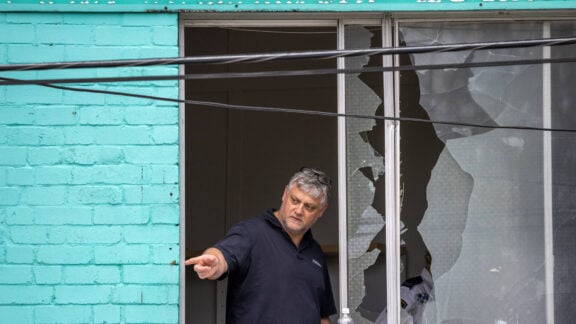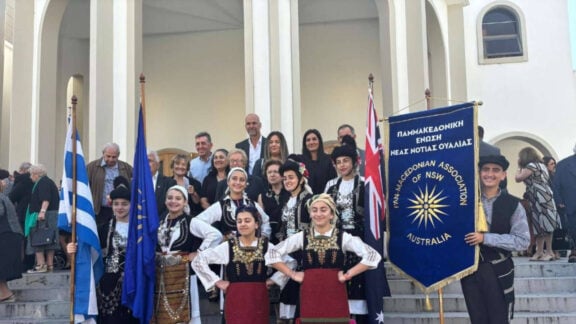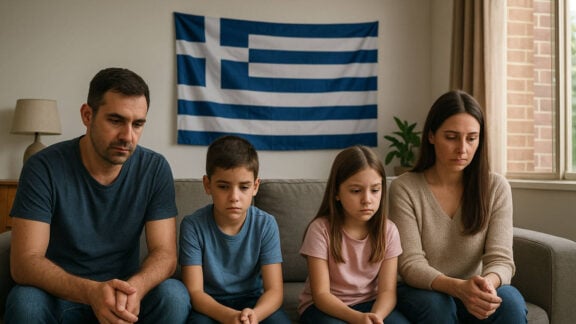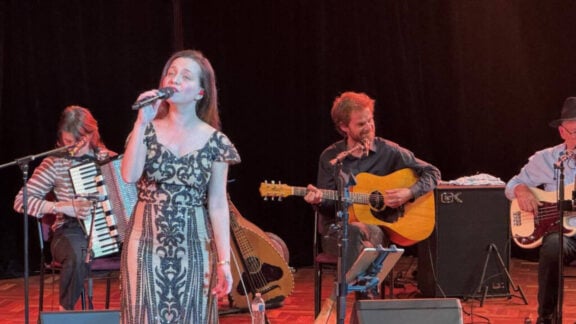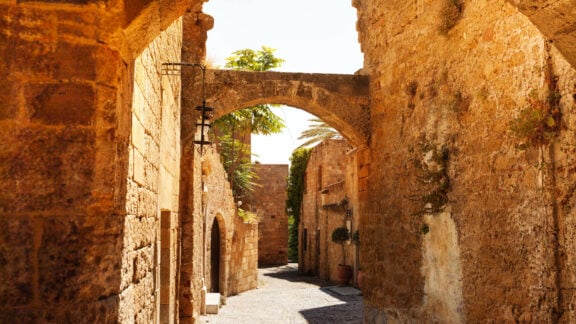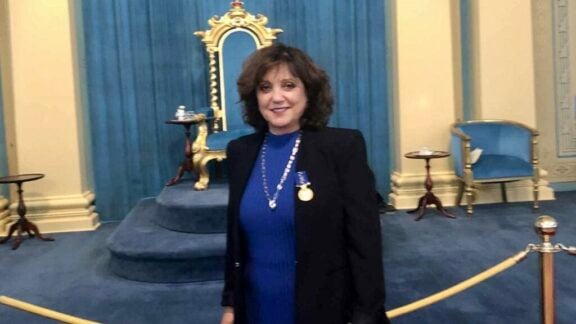This weekend Melbourne’s Oakleigh will once gain come alive with the sights and sounds of Greece’s own carnival celebrations: the ‘Apokries’.
Taking place in the lead up to the Great Lent, the Greek name ‘Απόκριες’ translates roughly to English as “goodbye to meat.”
Traditionally, the Greek carnival period is split into three weeks, each with their own theme that ushers in the community’s transition to a Lenten diet.
The first, ‘Profoni’, preannouncement-week, coincides with the opening of the ‘Triodion’ liturgical book in the Orthodox Church, which contains ecclesiastical directions for the weeks leading up to the Great Lent.
Second comes ‘Kreatini’, or meat-week where traditionally, households will endeavour to eat up all the animal-based foods left in their pantries so that it won’t go to waste; this culminates in ‘Tsiknopempti’ or smoky-Thursday, named for the pervasive scent of charred meats that lingers in the air during the festivities.
And lastly ‘Tyrini’, cheese-week, is intended to ease the transition to a meatless diet for adherents to the Lenten fast, focussed on the consumption of dairy products ahead of the strict dietary restrictions which will soon be imposed.
Alongside the more austere religious overtones, a variety of regional customs are observed in Greece around this time, informed by the history and ancient traditions of each locality, often incorporating pagan pre-Christian motifs in the revelry.

The largest Carnival celebration in the country takes place in the coastal city of Patras, which lasts from 17 January until ‘Clean Monday’, the beginning of Lent.
Hosting balls, parades and treasure hunts among myriad other activities, the Patras carnival began in its modern form in the early 19th century, influenced greatly by the Venetian Carnival to which it owes its unmistakably western characteristics.
The ‘Apokries’ in Oakleigh this year will pay homage to the folklore of the Greeks of Thrace, in light of the population exchange which, officially, took place between the Kingdom of Greece and the rapidly dissolving Ottoman Empire a century ago.
Performers from the Manasis School of Greek Dance and Culture draped in animal skins, adorned with bells and sporting masks will re-enact these rituals with keen attention to detail.
Dimosthenis Manasis, the school’s Director tells Neos Kosmos that by working with contemporaries in Greece dedicated to preserving these traditions, the group is able to bring a faithful representation of the artforms to Australia.
“I’ve always had a fascination with the ‘Apokries’ and these pagan customs which have been adapted through Christianity. Thankfully through our connections, we’re able to get our hands on traditional costumes, so the replicas we make for our performances are authentic,” he says.
“Of course, they’re very engaging, it’s very much a get in and get involved kind of thing. We always bring along spare costumes for members of the audience who are keen to have a go.”
At Oakleigh’s Eaton Mall on Sunday 22 January, 4pm, the ‘Pourpouris’ will come to life.
Hailing from the village of Isaakio in the region of Evros, it’s traditionally performed on the second day of Christmas as part of the ‘Dodekaimero’, or 12 days.
It was brought to Greece in 1922 by the ‘Sakpasiotes’, refugees who left their villages in Eastern Thrace, what is now Bulgaria and Turkey; as part of the population exchange which was formalised one year later in the Treaty of Lausanne.
The tradition sees the character ‘Pourpouris’ dressed in a shepherd’s cloak, mask, beard, bells, a wooden sword and a woman’s sash wrapped around his head, travel through the village in a dancing procession with his wife, their outlandish garb meant to ward off evil spirits from the land.
This year will be the first that the custom is re-enacted in its entirety in Australia.
Later in the evening at 6pm, performers will act out the custom of ‘Kamiles kai Divitzides’ (Camels and their Masters), from the region of ‘Anatoliki Romilia’ (Eastern Thrace).
With its origins in antiquity and the feasts held in honour of the Olympian deity Dionysus, over time the ritual performance was adapted to ensure its preservation in the Christian world.

The camel, evocative of the three magi who followed the skyborne star across the desert to the newborn Jesus, became a symbol of health and prosperity.
No two props used in the performances are ever the same, assembled from a type of hessian fabric with pieces of wood fixed together to make a frame, they’ve always been cobbled together from whatever was available.
The ‘Apokries’ will continue in Oakleigh the following weekend when the story of the ‘Rougatsia’ will be brought to crowds.
It sees masked men gallivanting through the streets as they attempt to collect bits of meat to make their ‘loukanika’ for the season ahead… only to be pestered by the troublesome ‘kalikantzaroi’ (goblins) in a comical act of seasonal silliness.
And on Sunday 5 February, 150 performers will wow onlookers at Rye Park on the Mornington Peninsula with more familiar regional Greek dance.
Groups of Greek beachgoers and friends are expected to make their way down for the Federation of Greek Elderly Citizens Clubs of Melbourne and Victoria’s annual Australia Day Picnic.
The long running event, a highlight on the Greek community’s social calendar, sees throngs descend on the seaside town to celebrate in good company with music, dance and song bringing all together for some heart warming amusement.

